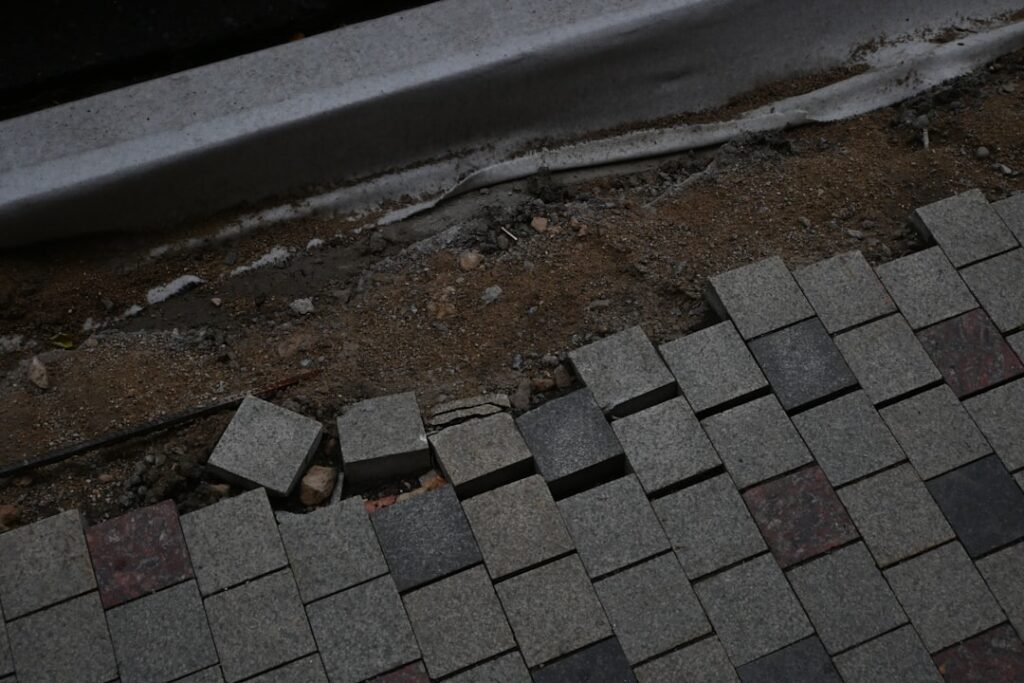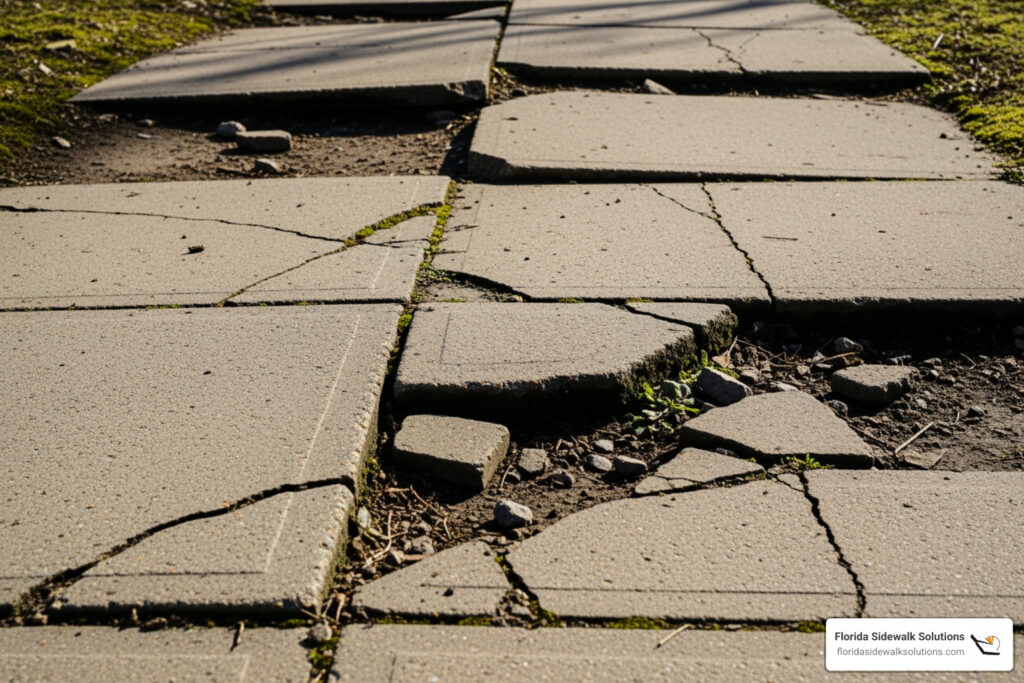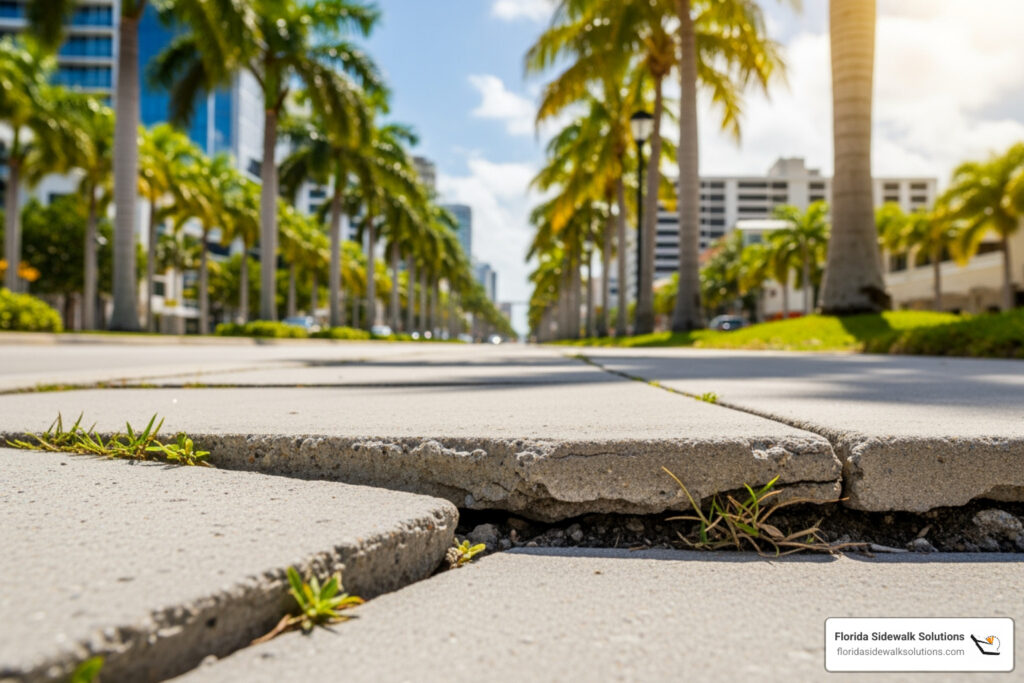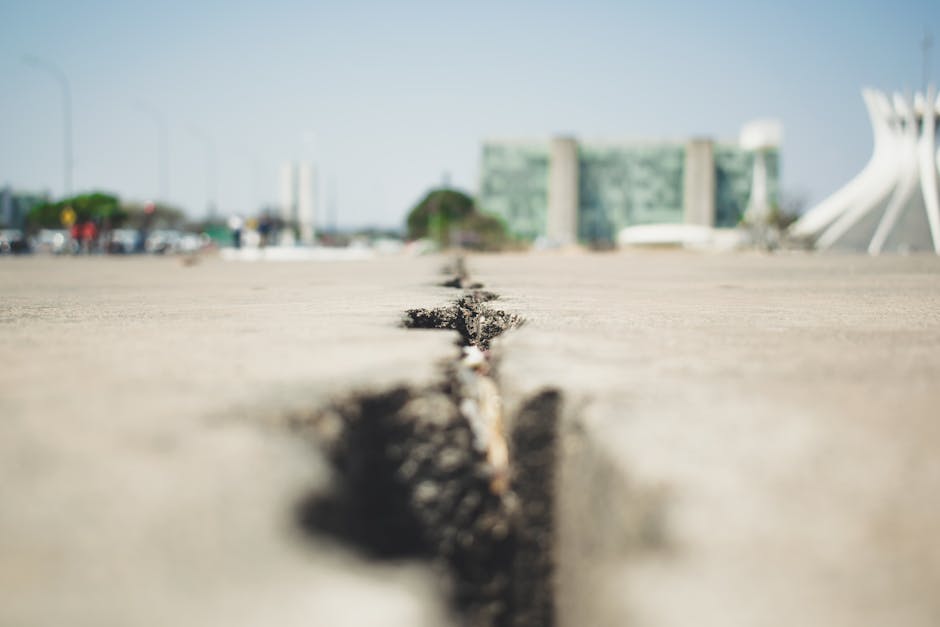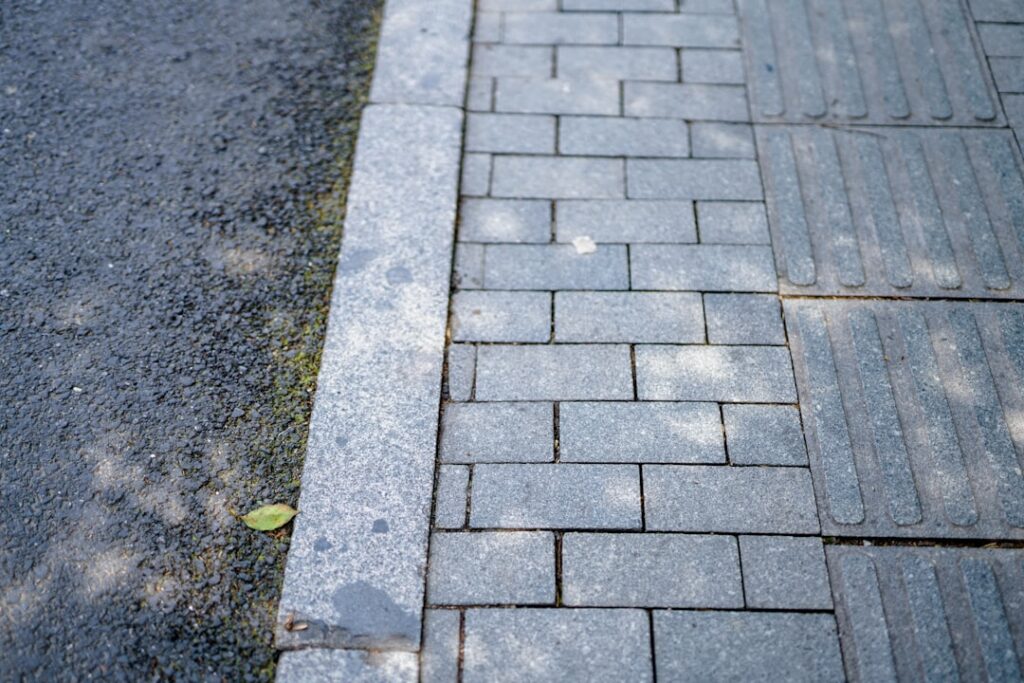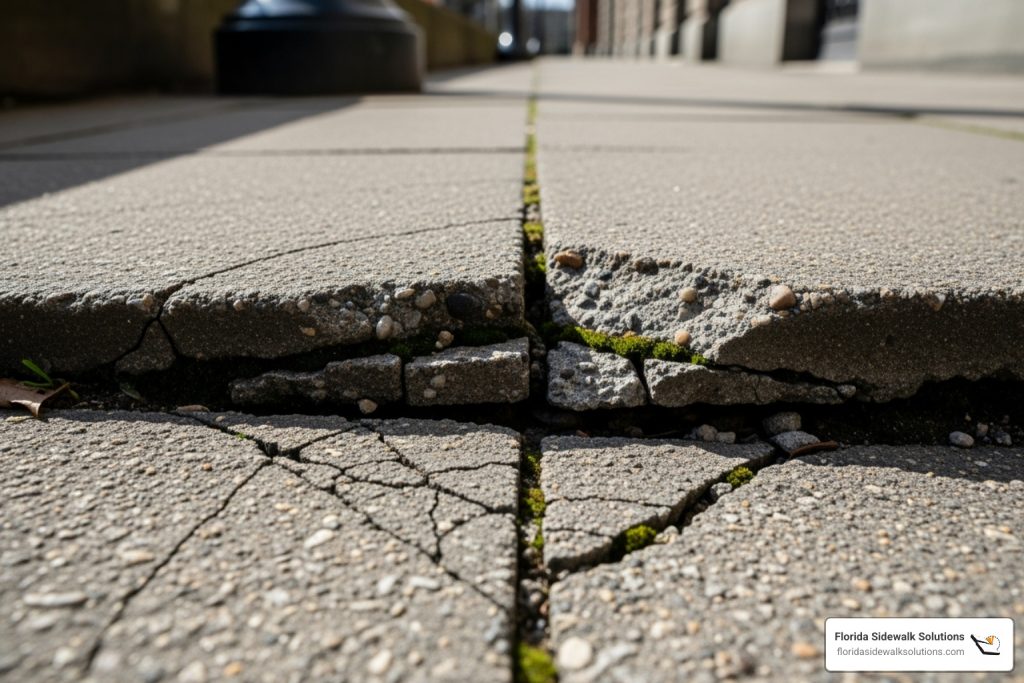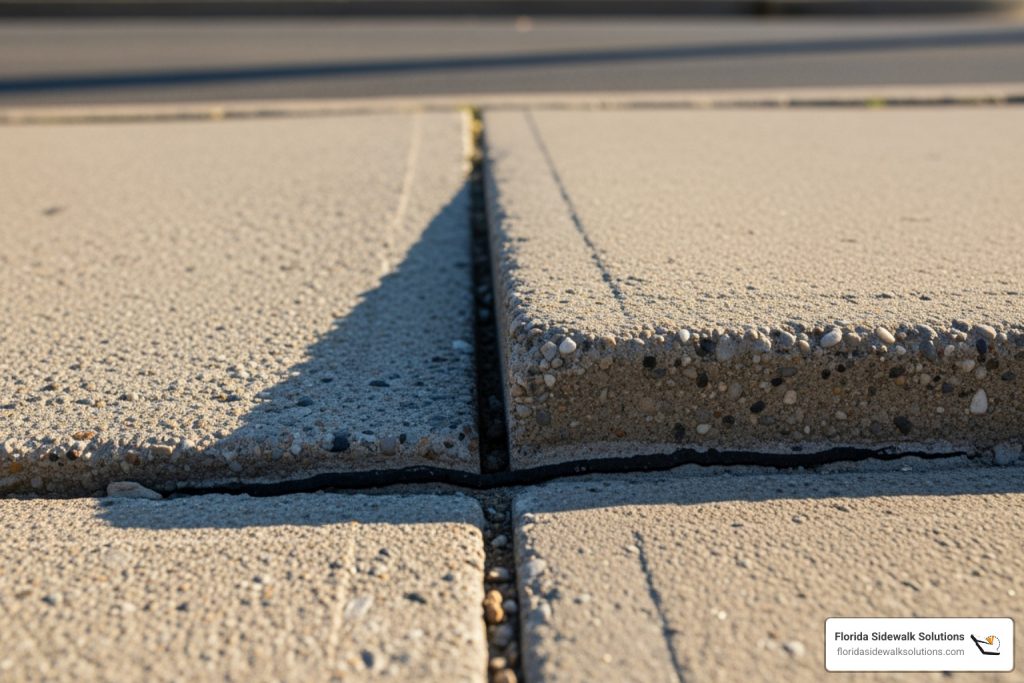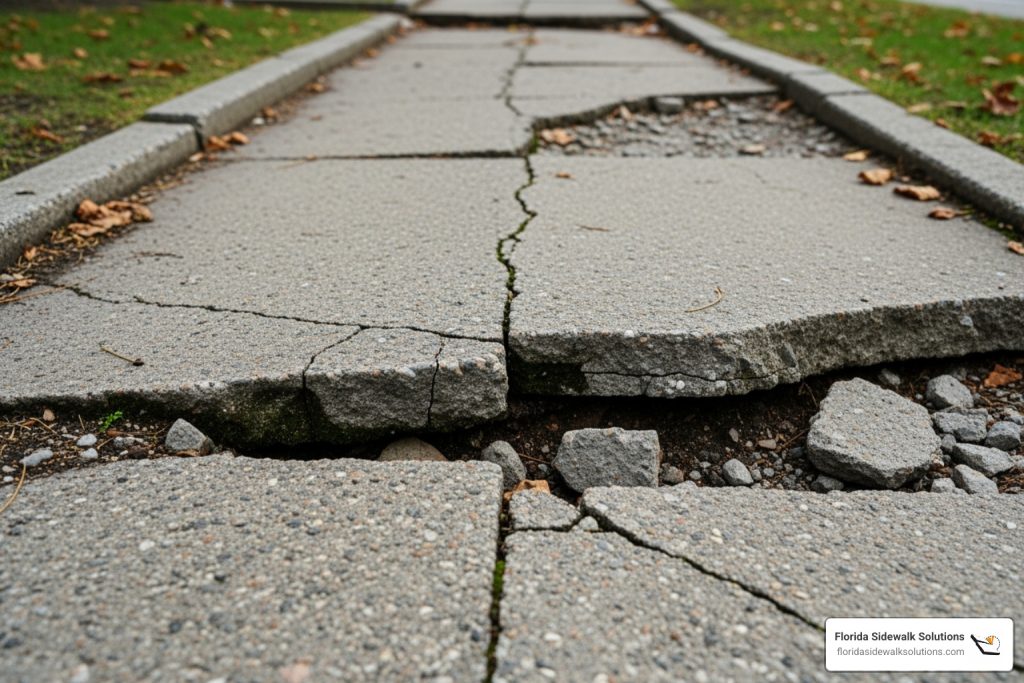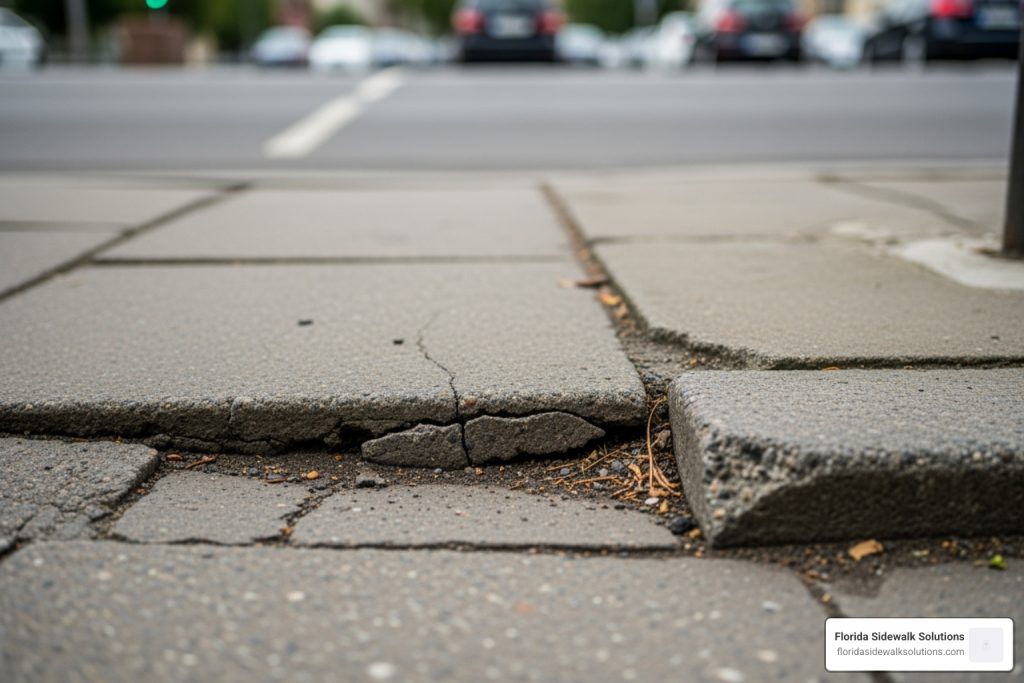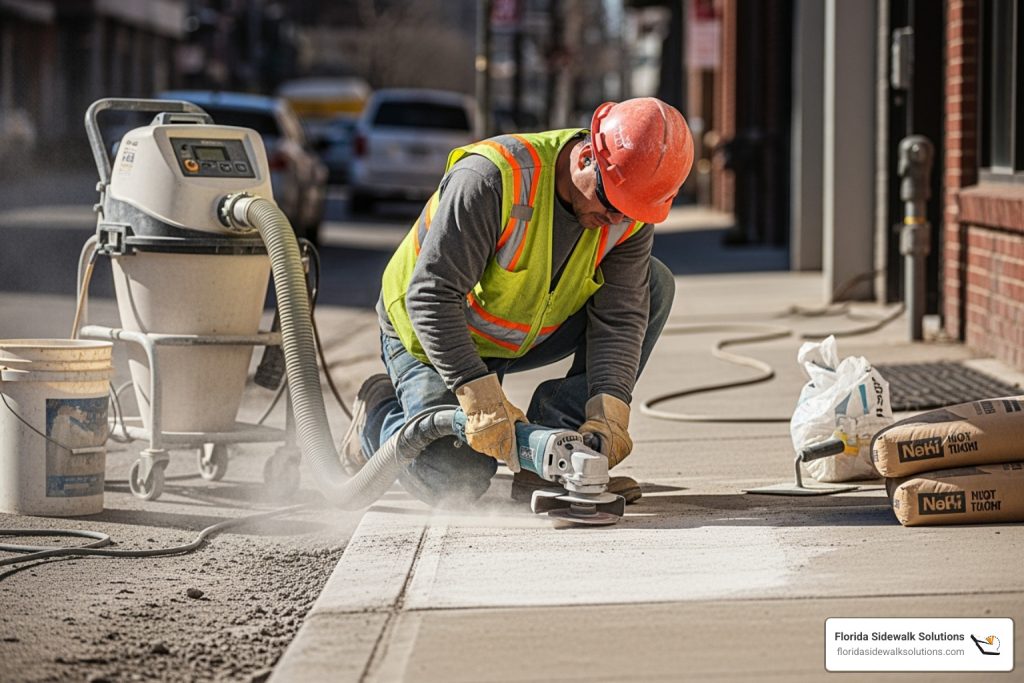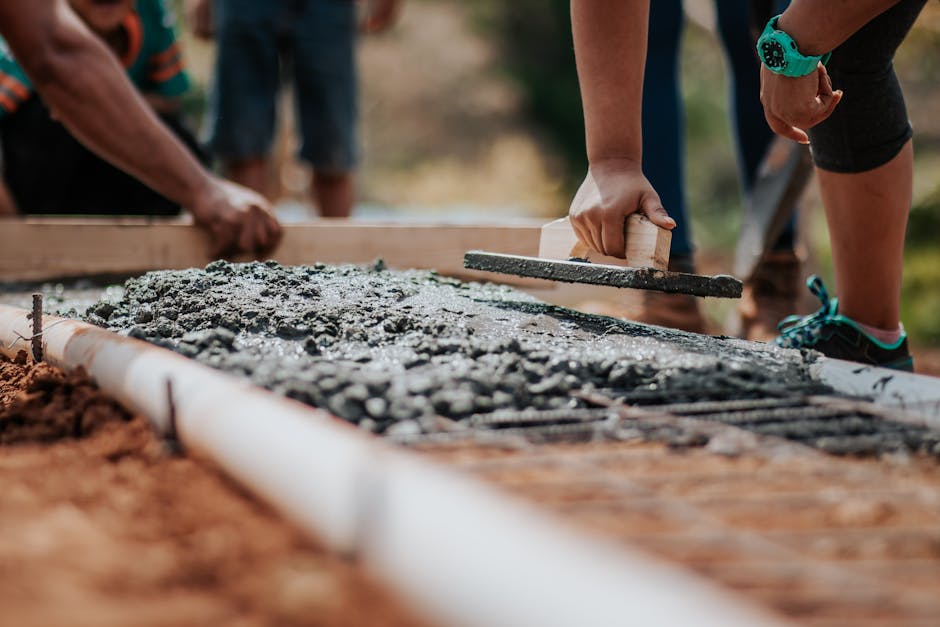Concrete repair and maintenance are crucial for ensuring the safety and durability of urban infrastructure, particularly sidewalks. Efficiently maintaining concrete surfaces can significantly extend their longevity and reduce potential hazards. This is especially important for municipal maintenance managers facing budget constraints and ADA compliance challenges.
In busy cities, concrete sidewalks endure constant stress from weather changes and foot traffic. Implementing a routine maintenance plan helps prevent minor issues from becoming major problems. Here are the key takeaways from effective concrete maintenance strategies:
- Regular Inspections: Identify cracks, chipping, or uneven surfaces early.
- Seasonal Care: Adjust maintenance efforts to address seasonal changes.
- Cost-Effective Solutions: Use effective methods like concrete cutting for leveling trip hazards.
Concrete is sturdy and long-lasting, but without regular upkeep, even the toughest surfaces can fail. Fortunately, by adopting proactive maintenance and repair strategies, municipalities can ensure their sidewalks remain safe, functional, and ADA compliant year-round.

Understanding Trip Hazards
Trip hazards on sidewalks are more than just an inconvenience—they are a safety risk and a compliance issue. Sidewalk safety is a critical concern for cities and communities, and addressing these hazards is essential to prevent accidents and meet legal requirements.
The Importance of ADA Compliance
The Americans with Disabilities Act (ADA) sets standards to ensure accessibility for individuals with disabilities. This includes maintaining sidewalks free of trip hazards that can impede mobility. Non-compliance can lead to penalties and, more importantly, can make public spaces inaccessible to those who rely on smooth, safe walkways.
Identifying Trip Hazards
Trip hazards typically arise when concrete slabs become uneven. This can happen due to:
- Tree roots pushing up slabs
- Soil erosion causing settling
- Freeze-thaw cycles leading to movement
Regular inspections are crucial. Look for any vertical displacement between slabs that exceed 1/4 inch, as these are considered trip hazards under ADA guidelines.
Effective Solutions for Trip Hazard Removal
Florida Sidewalk Solutions specializes in addressing these hazards efficiently. Their method of cutting concrete sidewalks to level them is both cost-effective and long-lasting. Unlike traditional grinders or full slab replacements, this technique minimizes downtime and disruption.
By focusing on concrete repair and maintenance, communities can improve safety and accessibility. Regular checks and prompt repairs not only ensure compliance but also extend the life of the sidewalk infrastructure.

Concrete Repair and Maintenance for Sidewalks
When it comes to concrete repair and maintenance for sidewalks, focusing on crack filling, leveling, and sealing is essential. These steps not only improve the appearance but also ensure safety and durability, especially in high-traffic areas.
Crack Filling
Cracks in sidewalks can quickly become trip hazards if not addressed. Filling these cracks as soon as they appear is crucial. Use a high-quality concrete caulk to fill gaps and prevent further deterioration. This process not only helps in maintaining a smooth surface but also prevents water from seeping in, which can cause further damage during freeze-thaw cycles.
Leveling
Uneven sidewalks are a common issue caused by tree roots, soil erosion, or natural settling. Florida Sidewalk Solutions offers an innovative approach to leveling sidewalks by cutting the concrete to make it even. This method is more effective and less expensive than traditional scabblers or concrete grinders. It ensures the sidewalk meets ADA compliance standards by eliminating vertical displacements greater than 1/4 inch.
Sealing
Sealing the concrete is a preventive measure that extends the lifespan of sidewalks. A good sealer protects against moisture, chemicals, and wear. Depending on the type of sealer used, it may need to be reapplied every 1-5 years. Regular sealing keeps the surface in top condition and reduces the need for frequent repairs.
By implementing these strategies, communities can maintain safe and accessible sidewalks that comply with ADA regulations. Regular maintenance not only prevents accidents but also saves on long-term repair costs.

Seasonal Maintenance Tips
Maintaining sidewalks throughout the year is crucial to ensure safety and longevity. Here’s a simple guide to help you manage concrete repair and maintenance seasonally.
Spring Inspection
As winter ends, it’s time to inspect your sidewalks. Look for cracks, uneven surfaces, or any new trip hazards. The freeze-thaw cycle can cause significant damage, so address these issues early.
- Check for Cracks: Fill any new cracks with high-quality concrete caulk to prevent water infiltration.
- Inspect for Leveling Needs: Identify uneven areas and consider the cutting method offered by Florida Sidewalk Solutions to level them effectively.
Summer Cleaning
Summer is perfect for giving your sidewalks a good clean. Removing dirt and grime not only improves appearance but also prepares the surface for any necessary sealing.
- Pressure Washing: Use a pressure washer to clean the surface thoroughly. This helps in removing accumulated dirt and prepares the surface for sealing.
- Seal the Concrete: Apply a high-quality sealer to protect against moisture and wear. This step is crucial to extend the life of your sidewalks.
Fall Preparation
As fall approaches, prepare your sidewalks for the upcoming winter. This preparation helps in preventing damage from harsh weather conditions.
- Clear Debris: Regularly remove leaves and debris to prevent staining and blockages that can lead to water pooling.
- Check Drainage: Ensure that water drainage systems direct water away from sidewalks to prevent soil erosion and potential settling.
Winter Protection
Winter poses unique challenges with freezing temperatures and potential snow. Protect your sidewalks from damage during this season.
- Avoid Salt: Use alternatives to salt for de-icing. Salt can cause concrete to crack and deteriorate.
- Monitor for New Hazards: Regularly check for new cracks or uneven areas caused by freeze-thaw cycles and address them promptly.
By following these seasonal tips, you can effectively manage concrete repair and maintenance for your sidewalks. Regular attention ensures they remain safe, attractive, and compliant with ADA standards year-round.
Frequently Asked Questions about Concrete Repair and Maintenance
What is concrete repair and maintenance?
Concrete repair and maintenance, particularly for sidewalks, focus on addressing trip hazards and ensuring ADA compliance. Florida Sidewalk Solutions specializes in cutting concrete sidewalks to level surfaces, which is a more effective and cost-efficient method compared to traditional techniques like scabblers, concrete grinders, or complete removal and replacement. This process involves identifying and fixing issues such as cracks and uneven surfaces to maintain safety and functionality.
How much does concrete repair cost?
The cost of concrete repair can vary based on several factors:
- Extent of Damage: Minor repairs like filling small cracks will cost less than leveling large areas.
- Materials Used: High-quality sealants and fillers can be more expensive but offer better protection.
- Professional vs. DIY: Hiring professionals like Florida Sidewalk Solutions ensures quality and compliance but might cost more than DIY methods.
For a precise quote, it’s best to consult with a professional who can assess the specific needs of your sidewalks.
What maintenance does concrete need?
Regular maintenance is key to keeping sidewalks safe and durable. Here’s what you should consider:
- Resealing: Depending on the exposure to elements, reseal every few years to protect against moisture and wear.
- Cleaning Frequency: Regular cleaning, such as pressure washing, helps maintain appearance and function. Aim for at least once a year, ideally in the summer.
- Inspection: Conduct seasonal inspections to catch and address issues early. This proactive approach can prevent small problems from becoming costly repairs.
By following these maintenance procedures, you can ensure that your sidewalks remain in top condition, reducing the need for extensive repairs and ensuring safety and compliance with ADA standards.
Conclusion
Florida Sidewalk Solutions is your go-to partner for effective trip hazard removal and ensuring ADA compliance for sidewalks and concrete walkways. Our patented technology offers a superior solution compared to traditional methods like scabblers and concrete grinders. By cutting the concrete to make it level, we provide a cost-effective and durable fix that improves safety and accessibility.
Our commitment to quality and compliance is what sets us apart. We understand the importance of maintaining safe walkways, not just for aesthetic purposes but also for the safety and accessibility of everyone, including those with disabilities. Ensuring ADA compliance is crucial, and our methods are designed to meet these standards efficiently.
Whether you’re in Davie, Fort Lauderdale, Coral Springs, or any of our other locations across Florida, we’re here to help keep your sidewalks safe and accessible. If you’re ready to address trip hazards and improve the safety of your property, explore our services and see how we can assist you.
For more information on our services, visit our Sidewalk Repairs page and find how Florida Sidewalk Solutions can make a difference in your community.
Proactive maintenance and repair are key to long-lasting and safe concrete surfaces. Let’s work together to keep your sidewalks in top shape!


